Anodizing Aluminum
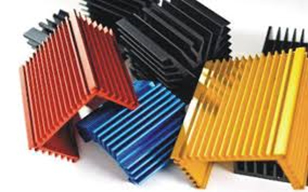
Anodizing is an electrochemical process that converts the metal surface into a decorative, durable, corrosion-resistant, anodic oxide finish. Aluminum is ideally suited to anodizing, although other nonferrous metals, such as magnesium and titanium, also can be anodized.
The anodic oxide structure originates from the aluminum substrate and is composed entirely of aluminum oxide. This aluminum oxide is not applied to the surface like paint or plating, but is fully integrated with the underlying aluminum substrate, so it cannot chip or peel. It has a highly ordered, porous structure that allows for secondary processes such as coloring and sealing.
Anodizing is accomplished by immersing the aluminum into an acid electrolyte bath and passing an electric current through the medium. A cathode is mounted to the inside of the anodizing tank; the aluminum acts as an anode, so that oxygen ions are released from the electrolyte to combine with the aluminum atoms at the surface of the part being anodized. Anodizing is, therefore, a matter of highly controlled oxidation—the enhancement of a naturally occurring phenomenon.
Anodized finishes have made aluminum one of the most respected and widely used materials today in the production of thousands of consumer, commercial and industrial products.
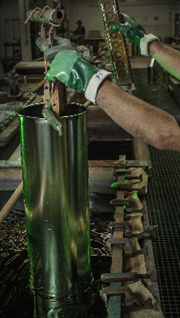 Sulfuric anodizing is used for several reasons. First, it improves corrosion resistance by speeding up the naturally occurring oxidation process, especially in environments where the aluminum will be exposed to industrial, humid, marine atmospheres, and even outer space. Second, the anodizing finish provides excellent electrical insulating properties when dielectric properties are important for electrical components. Third, anodized aluminum is easy to clean and resists heat to the temperatures to which the aluminum itself melts. And fourth, anodizing can improve paint adhesion. Though less expensive coatings can provide similar improvements, the anodizing process provides for excellent adhesion.
Sulfuric anodizing is used for several reasons. First, it improves corrosion resistance by speeding up the naturally occurring oxidation process, especially in environments where the aluminum will be exposed to industrial, humid, marine atmospheres, and even outer space. Second, the anodizing finish provides excellent electrical insulating properties when dielectric properties are important for electrical components. Third, anodized aluminum is easy to clean and resists heat to the temperatures to which the aluminum itself melts. And fourth, anodizing can improve paint adhesion. Though less expensive coatings can provide similar improvements, the anodizing process provides for excellent adhesion.
We are passionate about Aluminum and wholly appreciate its many benefits. We offer you several great reasons to consider aluminum for your next project.
- Aluminum is a light metal, about the third of the density of steel, copper, and brass.
- Aluminum has good corrosion resistance to common atmospheric and marine atmospheres. Its corrosion resistance and scratch resistance can be enhanced by anodizing.
- Aluminum has high reflectivity and can be used for decorative applications.
- Some aluminum alloys can match or even exceed the strength of common construction steel.
- Aluminum retains its toughness at very low temperatures, without becoming brittle like carbon steels.
- Aluminum is a good conductor of heat and electricity. When measured by equal cross-sectional area, electrical grade aluminum has conductivity which is approximately 62% of electrical grade annealed copper. However, when compared using equal weight, the conductivity of aluminum is 204% of copper.
- Aluminum is readily worked and formed using a wide variety of forming processes including deep-drawing and roll forming.
- Aluminum is non-toxic and is commonly used in contact with foodstuffs.
- Aluminum can be readily recycled.
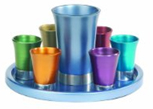 Improves corrosion resistance.
Improves corrosion resistance.- Provides electrical insulation.
- Resists high temperature extremes.
- Provides paint adhesion.
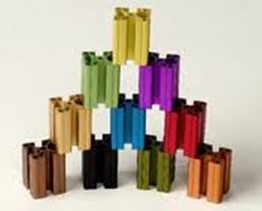 One of the best features of the anodize coating is its ability to absorb colored dyes after the coating is formed. Aluminum has a wide selection of colors available. These include:
One of the best features of the anodize coating is its ability to absorb colored dyes after the coating is formed. Aluminum has a wide selection of colors available. These include:
- Black
- Red
- Blue
- Gold
- Purple
- Green
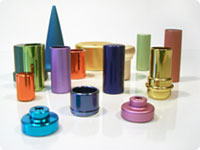 Good for all types of aluminum alloys.
Good for all types of aluminum alloys.
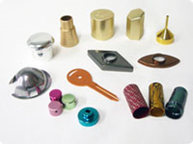 Because anodizing is such a versatile process there are literally thousands of different applications. These applications include but are not limited to:
Because anodizing is such a versatile process there are literally thousands of different applications. These applications include but are not limited to:
- Military products.
- Industrial products.
- Commercial products.
- Consumer products.
- Automotive products.
- Aerospace.
Anywhere aluminum can be used.
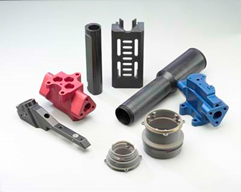 Most commonly used military standard MIL-A-8625.
Most commonly used military standard MIL-A-8625.
PROCESSING SPECIFICATIONS
Major airframe, aerospace and defense contractors, as well as both large and small commercial and industrial firms, utilize the services of AMF HOLLY-ART
ALUMINUM ANODIZING
Type II = Standard or sulphuric anodize
Class 1 = Non-dyed coatings
Class 2 = Dyed coatings (color to be specified)
PASSIVATION OF STAINLESS STEELS
